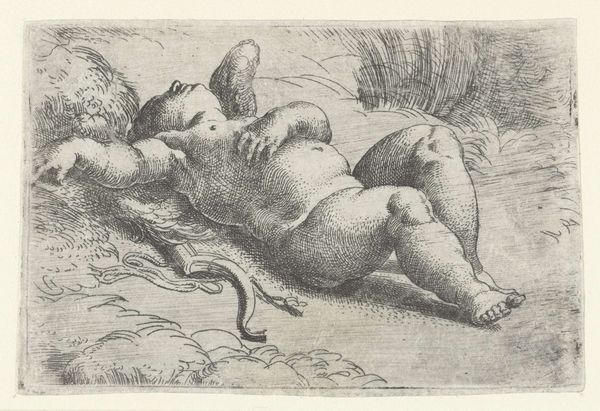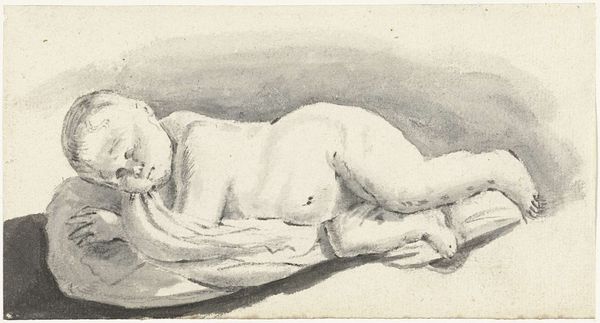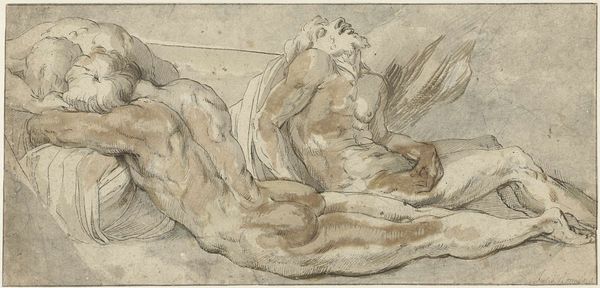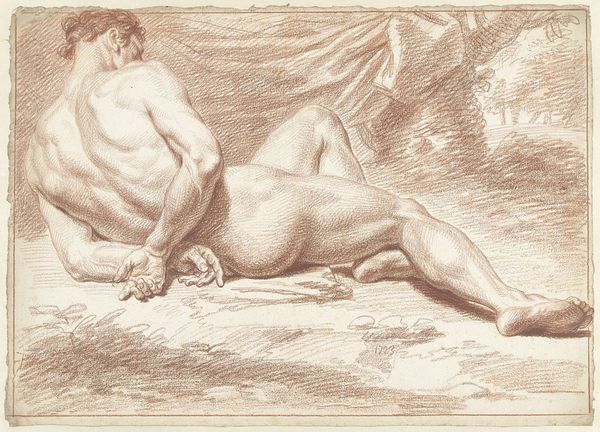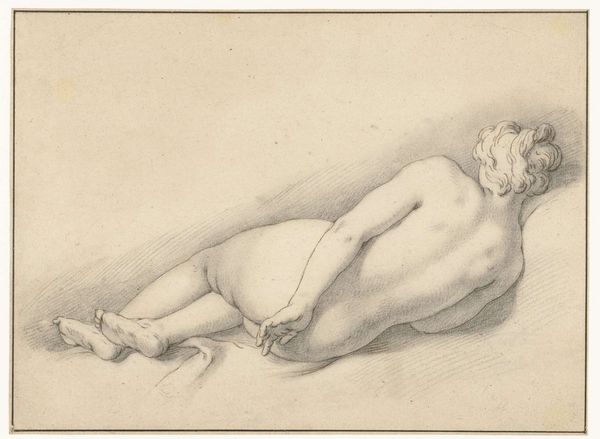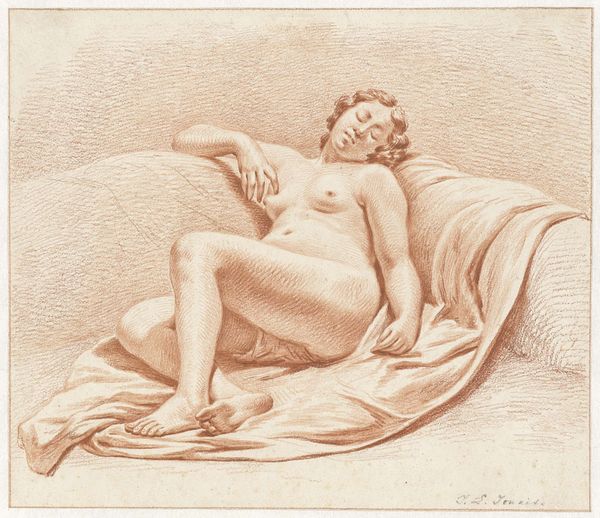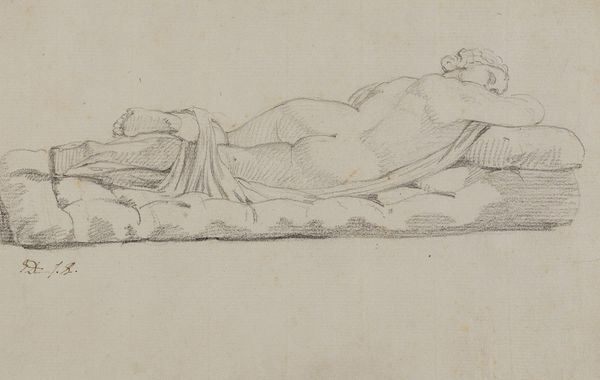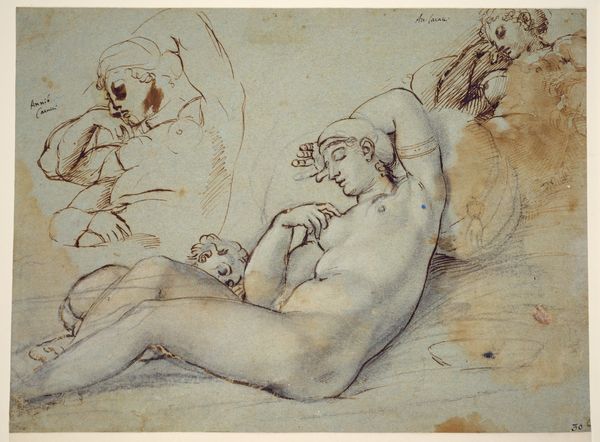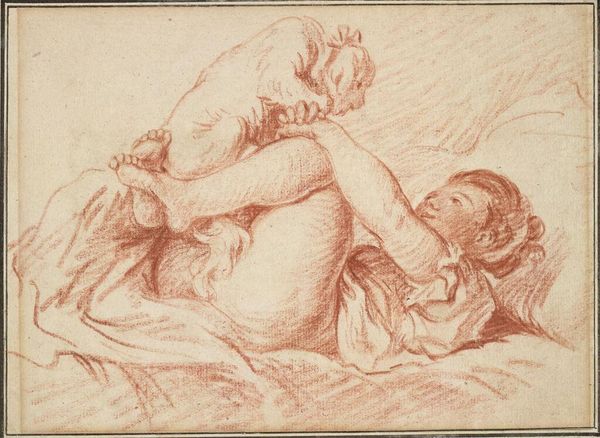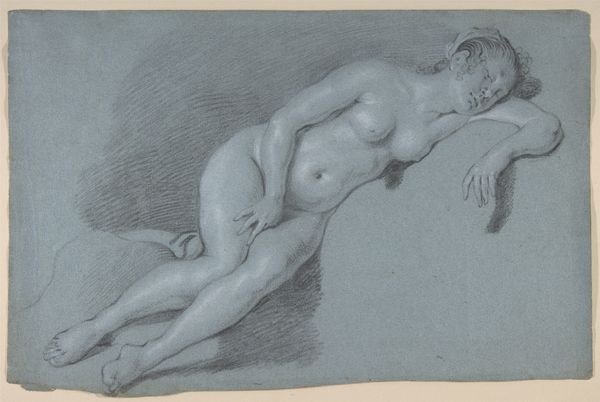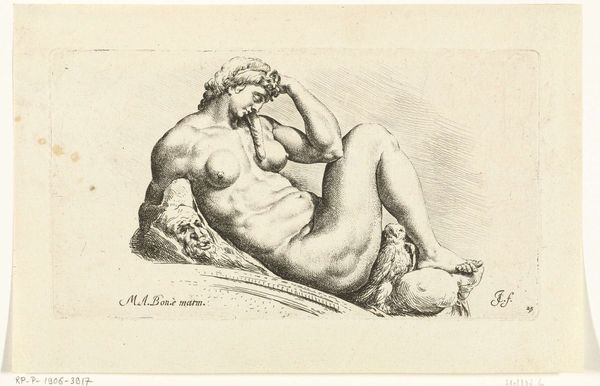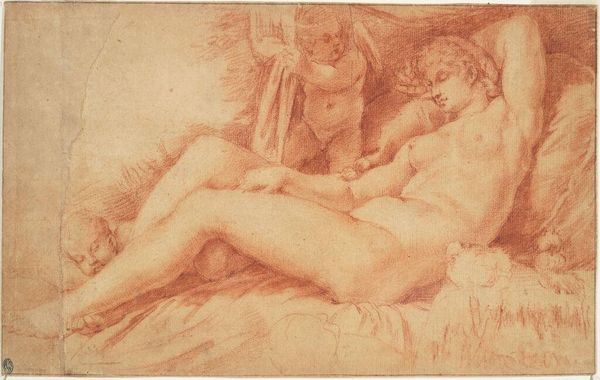
Copyright: Public domain
Curator: Ah, there's an ease in the lines and that hazy golden glow reminds me of long, sun-soaked afternoons. Editor: Let's explore François Boucher's pastel drawing, "Young Woman Sleeping," created around 1760. You can currently find this delicate rendering at the Hermitage Museum in Saint Petersburg. Curator: Delicacy is the word! The hatching creates a gorgeous luminosity that makes it seem like she's emitting her own light. And the composition, with that graceful diagonal of her body...it really holds your gaze. Editor: Indeed. Boucher's use of pastel allows for a remarkable softness and almost tactile quality, particularly in rendering the textures of the fabrics and the skin. Notice how the artist focuses primarily on form and line to suggest volume. He creates shadow by varying the proximity and density of fine strokes, using the golden hued paper to give shape to areas of highlights. Curator: It’s like we’re invited to peek into a private, dreamlike moment, all gentle curves and repose. What do you make of the almost voyeuristic aspect? It’s intimate, but then that was very much his thing wasn't it? Editor: We see Boucher channeling the prevailing Rococo sensibilities. He was interested in sensuality, and pleasure—he also wanted to elicit emotions from his audience. As a genre painting, the picture explores human form—in its purest shape. A kind of detached and delicate eroticism seems embedded in the style and composition of this boudoir scene. Curator: And despite the title, there’s an undeniable vibrancy—she almost vibrates off the page, thanks to the dynamism in his line work. I suppose one could argue that's also down to Boucher's exquisite handling of the Romantic idiom, which in many ways elevated depictions of beauty during his lifetime. Editor: Precisely. Boucher’s rendering—of beauty, the body, pleasure—captured and influenced the zeitgeist of his age, his paintings presenting his refined ideas on sexuality and representation that proved highly successful in artistic circles, becoming both incredibly influential and widely collected throughout the 18th and 19th centuries. Curator: I agree; he caught lightning in a bottle, creating a timeless representation of languid beauty. Editor: And he really knew how to draw—how to draw out the sublime.
Comments
No comments
Be the first to comment and join the conversation on the ultimate creative platform.
